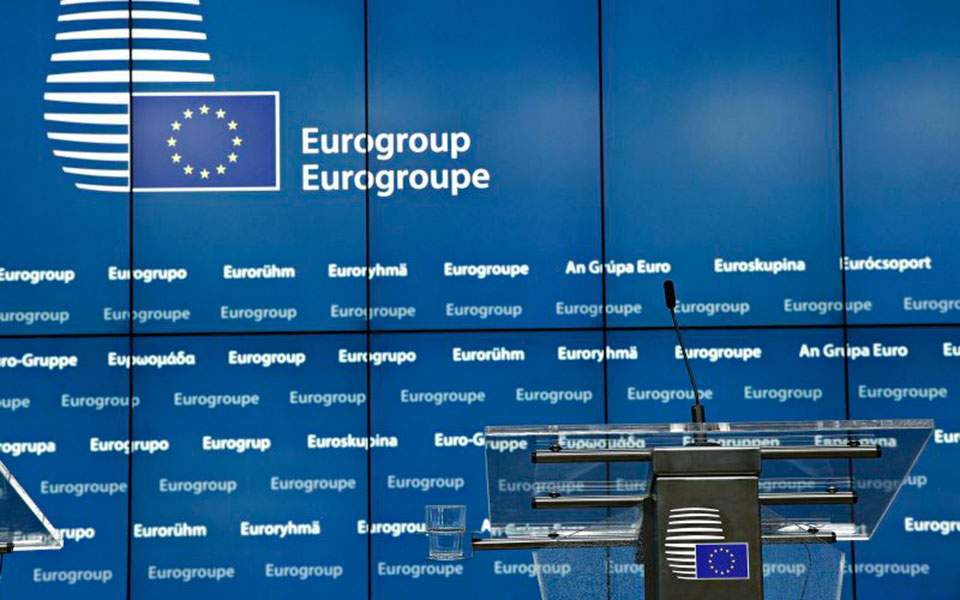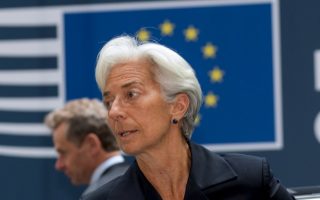The full terms of Greece’s bailout exit decided by the Eurogroup

The main objective of the debt easing measures the eurozone finance ministers discussed until the early hours of Friday was to ensure that Greece’s dues would not only be sustainable for the near future but also for the following decades.
Greece will need to ensure that it will not spend any more than 15 percent of its gross domestic product toward servicing its debt in the medium term and 20 percent of its GDP in the long term, along with securing that its debt is in a reduction course.
The full set of measures agreed at the Eurogroup are the following:
1. Medium-term debt measures
- Further extension of the grace period for the loans of the European Financial Stability Facility (some 100 billion euros) by 10 years and an extension of the average maturing period by a decade.
- Return to the Greek coffers of the profits that national central banks in the eurozone have from Greek bonds (ANFAs and SMPs), currently amounting to some 4 billion euros. This money will be returned to Athens in two equal tranches every year, starting in December 2018 up to June 2022, through the special account of the European Stability Mechanism and will be used to reduce the country’s financing needs.
- Abolition of the interest rate step-up associated with the loan from the EFSF. The ANFA/SMP and interest rate measures will only be implemented if Greece stocks to its post-bailout commitments, which will be established by its creditors through their quarterly visits to the country.
2. Long-term debt measures
- The Eurogroup has agreed to a new debt sustainability analysis (DSA) by Greece’s creditors in end-2032, based on which the eurozone finance ministers will decide on the need of any further measures to lighten Greece’s debt, so as to safeguard that the targets for the financing needs to service the national debt are met. A condition for this is that Athens adheres to the European fiscal framework.
- Instead of the so-called French mechanism which was intensely discussed in recent months and associated the level of economic growth in Greece with the debt lightening measures, the Eurogroup has decided on a much more general and less ambitious framework. The French mechanism is therefore replaced by a system that will only be activated in case there is a far more adverse and unforeseeable macroeconomic scenario. “Whenever activated by the Eurogroup, it will contain measures such as the further restructuring of the debt with a ceiling and extensions of the EFSF loan interest rates in case this is necessary for the sustainability of the debt,” as the Eurogroup statement declared on Friday.
Final tranche at 15 bln
The last installment of the third bailout program will come to 15 billion euros. The level of the tranche depended on the extension of EFSF loan maturities and the extension of the grace period. Therefore the final installment was agreed to reach up to 15 billion as it was decided that the period of no interest rate payment and no loan repayment and that of the loan extension would amount to 10 years. The negotiation started with the tranche ranging between 11.7 and 21.7 billion euros.
Part of that 15 billion-euro tranche will be used for the repayment of the debt. It is likely that part of the loan of the International Monetary Fund will also be bought out as it has a high interest rate. The remainder will be used for building up the so-called cash buffer that will contribute in the country;s return to the markets, operating like a safety net.
Greece will resort to that amount of money should borrowing from the markets be too expensive. In total Greece will emerge from the bailout program with a significant cushion that will be able to cover the funding needs of the Greek state for more than two years after the end of the program in August.
IMF participation
Officially the IMF will not participate in funding the Greek program, but although its administration greeted the completion of the ESM program and the further specification of the measures on the debt, it was not immediately clear whether what its position would be on the sustainability of the Greek debt.
The IMF’s program may not be activated, but the Fund has confirmed its participation in the post-bailout surveillance framework along with the eurozone institutions. In the next few weeks a team of IMF experts is expected to draft the sustainability report for the Greek debt as part of the Article IV report it drafts for all IMG member-states. Sources say that the position it will present there will not be so clear regarding whether the Greek debt is sustainable.





